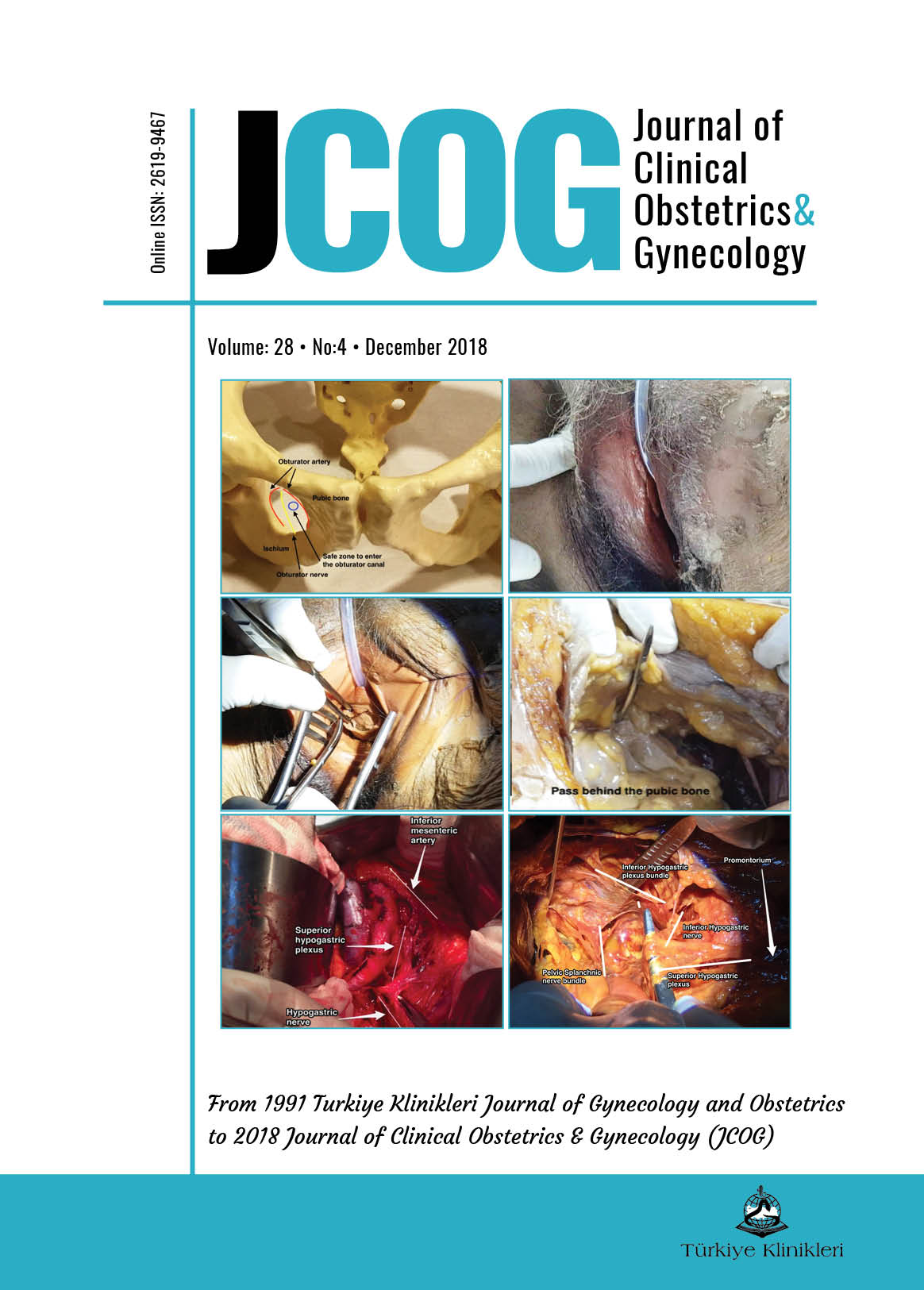Open Access
Peer Reviewed
ORIGINAL RESEARCH
2337 Viewed1399 Downloaded
Feasibility of Basket Technique Compared to the Office Hysteroscopy to Treat Endometrial Polyps in Patients Undergoing in Vitro Fertilization
J Clin Obstet Gynecol. 2018;28(4):132-9
DOI: 10.5336/jcog.2018-62152
Article Language: EN
Article Language: EN
Copyright Ⓒ 2025 by Türkiye Klinikleri. This is an open access article under the CC BY-NC-ND license (http://creativecommons.org/licenses/by-nc-nd/4.0/)
ABSTRACT
Objective: The authors aim to compare the results of office hysteroscopic basket polypectomy with operative hysteroscopy in endometrial polyps detected prior to in vitro fertilization (IVF). Material and Methods: Infertile patients, who underwent polypectomy before treatment, were analyzed retrospectively. Patients who underwent basket polypectomy as Office hysteroscopy (Group 1, n=55) and hysteroscopic polypectomy (Group 2, n=49) were included in the study. Demographic data, operation time, success rates, and pregnancy rates after operation were compared between the two groups. Results: The mean operating time for Group 1 was 14.98 ±3.67 min, while that for Group 2 was 18.84±3.30 min (p=0.001). The success rates between the groups were similar (96.3% vs. 100%; p=0.652), without any major complications. Further, the biochemical (52.7% vs. 48.9%, OR 1.19; 95% CI: 0.55-2.59; p=0.696), clinical (43.6% vs. 40.8%, OR 1.16; 95% CI: 0.52-2.59; p=0.712), ongoing pregnancy (38.1% vs. 34.6%, OR 1.21; 95% CI: 0.52-2.81; p=0.647), live births (34.5% vs. 28.6%, OR 1.3116; 95% CI:0.57-3.03; p=0.514), early spontaneous miscarriage (5.5% vs. 6.1, OR 0.88; 95% CI: 0.17-4.60; p=0.884) and spontaneous pregnancy (5.5 vs. 4.1, OR 0.745;%95 CI: 0.21-8.4; p=0.745) rates after polypectomy were observed to be similar in both the groups. Conclusion: Hysteroscopic basket polypectomy was not inferior to operative hysteroscopy regarding success rates and was found to be superior in terms of operating time in patients planning in vitro fertilization.
Objective: The authors aim to compare the results of office hysteroscopic basket polypectomy with operative hysteroscopy in endometrial polyps detected prior to in vitro fertilization (IVF). Material and Methods: Infertile patients, who underwent polypectomy before treatment, were analyzed retrospectively. Patients who underwent basket polypectomy as Office hysteroscopy (Group 1, n=55) and hysteroscopic polypectomy (Group 2, n=49) were included in the study. Demographic data, operation time, success rates, and pregnancy rates after operation were compared between the two groups. Results: The mean operating time for Group 1 was 14.98 ±3.67 min, while that for Group 2 was 18.84±3.30 min (p=0.001). The success rates between the groups were similar (96.3% vs. 100%; p=0.652), without any major complications. Further, the biochemical (52.7% vs. 48.9%, OR 1.19; 95% CI: 0.55-2.59; p=0.696), clinical (43.6% vs. 40.8%, OR 1.16; 95% CI: 0.52-2.59; p=0.712), ongoing pregnancy (38.1% vs. 34.6%, OR 1.21; 95% CI: 0.52-2.81; p=0.647), live births (34.5% vs. 28.6%, OR 1.3116; 95% CI:0.57-3.03; p=0.514), early spontaneous miscarriage (5.5% vs. 6.1, OR 0.88; 95% CI: 0.17-4.60; p=0.884) and spontaneous pregnancy (5.5 vs. 4.1, OR 0.745;%95 CI: 0.21-8.4; p=0.745) rates after polypectomy were observed to be similar in both the groups. Conclusion: Hysteroscopic basket polypectomy was not inferior to operative hysteroscopy regarding success rates and was found to be superior in terms of operating time in patients planning in vitro fertilization.
MENU
POPULAR ARTICLES
MOST DOWNLOADED ARTICLES





This journal is licensed under a Creative Commons Attribution-NonCommercial-NoDerivatives 4.0 International License.










